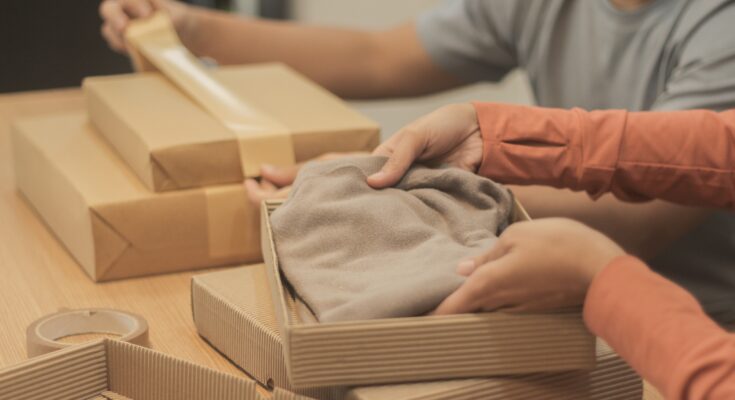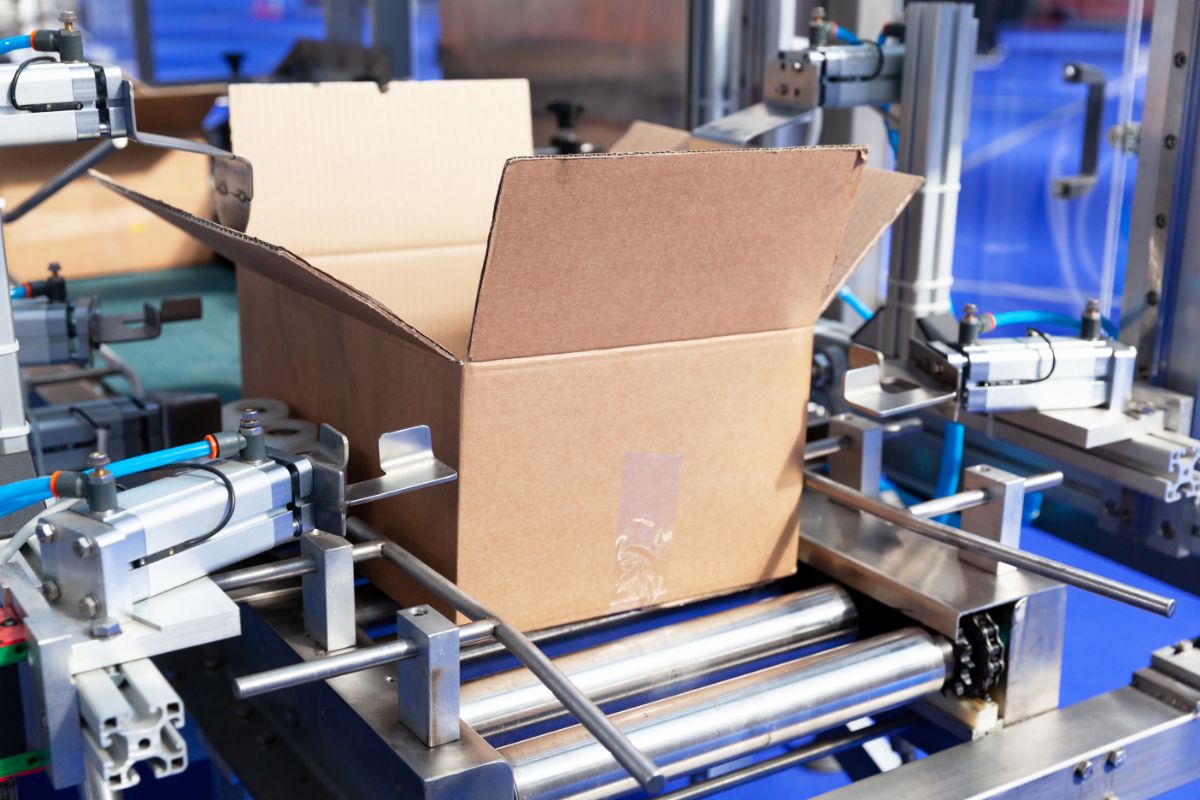Innovative Packaging Solutions for Malaysian Businesses
🌿 Are you tired of seeing mountains of plastic waste piling up in Malaysia’s landfills? As a business owner, you have the power to make a difference. The packaging industry is undergoing a revolution, and it’s time for Malaysian businesses to join the movement towards innovative, sustainable solutions.
Imagine packaging that not only protects your products but also tells a story, engages customers, and reduces your environmental footprint. From biodegradable materials to smart technologies, the world of packaging is evolving rapidly. But with so many options available, how do you choose the right solution for your business? 🤔
In this blog post, we’ll explore the cutting-edge packaging innovations transforming Malaysian industries. We’ll dive into eco-friendly alternatives, smart technologies, and customization opportunities that can set your brand apart. Plus, we’ll uncover cost-effective solutions and regulatory compliance tips to ensure your packaging strategy is both profitable and responsible. Get ready to unwrap the future of packaging and propel your business into a new era of sustainability and success! 🚀
Current Packaging Challenges in Malaysia
A. Environmental concerns
In Malaysia, environmental concerns are at the forefront of packaging challenges. The excessive use of non-biodegradable materials has led to significant pollution and waste management issues. Many businesses struggle to balance functionality with sustainability.
- Key environmental concerns:
- Plastic pollution in waterways
- Landfill overcrowding
- Carbon footprint of packaging production
- Deforestation for paper-based packaging
B. Cost-effectiveness issues
Cost remains a critical factor for Malaysian businesses when choosing packaging solutions. Traditional packaging methods often incur high production costs, impacting overall profitability.
| Cost Factor | Impact on Businesses |
|---|---|
| Raw materials | Higher expenses for eco-friendly options |
| Production processes | Increased energy consumption |
| Transportation | Bulky packaging leads to higher shipping costs |
| Waste disposal | Additional fees for non-recyclable materials |
C. Branding limitations
Many Malaysian companies face challenges in creating distinctive packaging that effectively communicates their brand identity. Limited access to advanced printing technologies and design expertise can hinder branding efforts.
D. Logistics and transportation hurdles
The diverse geography of Malaysia presents unique logistical challenges for packaging. From bustling urban centers to remote rural areas, businesses must consider varying transportation conditions and storage requirements.
- Logistics challenges:
- Climate-resistant packaging for tropical weather
- Stackability for efficient transportation
- Protection against rough handling during transit
- Adaptability to different retail environments
As we explore eco-friendly packaging solutions in the next section, we’ll see how innovative approaches can address these current challenges while promoting sustainability.
Eco-friendly Packaging Solutions
Biodegradable materials
Biodegradable materials are at the forefront of eco-friendly packaging solutions in Malaysia. These materials, derived from natural sources, break down naturally without harming the environment. Some popular options include:
- Cornstarch-based plastics
- Bamboo packaging
- Mushroom packaging
- Seaweed-based materials
Recycled and recyclable options
Malaysian businesses are increasingly adopting recycled and recyclable packaging to reduce their environmental impact. Here’s a comparison of common recyclable materials:
| Material | Recyclability | Durability | Cost-effectiveness |
|---|---|---|---|
| Paper | High | Medium | High |
| Glass | High | High | Medium |
| Aluminum | High | High | Medium |
| PET | High | High | High |
Minimalist designs for reduced waste
Minimalist packaging designs are gaining popularity in Malaysia, offering both aesthetic appeal and waste reduction. Key principles include:
- Simplified graphics and text
- Reduced use of colors and inks
- Elimination of unnecessary layers
- Focus on essential information only
Reusable packaging concepts
Reusable packaging is an innovative solution that extends the life cycle of packaging materials. Malaysian businesses are exploring various reusable concepts such as:
- Refillable containers for household products
- Returnable shipping boxes for e-commerce
- Durable, multi-use food containers for takeaway services
- Reusable shopping bags made from sustainable materials
By embracing these eco-friendly packaging solutions, Malaysian businesses can significantly reduce their environmental footprint while meeting consumer demands for sustainable products. Next, we’ll explore how smart packaging technologies are revolutionizing the industry.
Smart Packaging Technologies
QR code integration for product information
QR codes have revolutionized the way Malaysian businesses provide product information to consumers. By integrating these scannable codes into packaging, companies can offer a wealth of data instantly. Here’s how QR codes are transforming packaging:
- Instant access to detailed product specifications
- Links to instructional videos or user manuals
- Real-time updates on product availability or recalls
- Nutritional information for food products
| Benefits of QR Codes | Implementation Challenges |
|---|---|
| Enhanced consumer engagement | Initial setup costs |
| Reduced printing costs | Need for consumer education |
| Easy updates to information | Dependence on smartphone technology |
| Trackable consumer interactions | Potential for QR code fatigue |
NFC-enabled interactive packaging
Near Field Communication (NFC) technology takes smart packaging a step further, offering touch-based interactions. Malaysian businesses are exploring NFC to create immersive experiences:
- Tap-to-purchase functionality for easy reordering
- Authentication of luxury goods to combat counterfeiting
- Personalized content delivery based on user preferences
- Loyalty program integration for instant rewards
Augmented reality experiences
Augmented Reality (AR) is transforming packaging into an interactive marketing tool. Malaysian brands are leveraging AR to:
- Showcase product features through 3D visualizations
- Provide virtual try-on experiences for cosmetics or apparel
- Offer gamified experiences to increase brand engagement
- Present step-by-step assembly instructions for complex products
IoT-based tracking and monitoring
The Internet of Things (IoT) is enabling Malaysian businesses to implement smart tracking and monitoring solutions in their packaging. This technology offers:
- Real-time temperature monitoring for perishable goods
- Tamper-evident packaging with electronic seals
- Supply chain optimization through GPS tracking
- Automated inventory management and reordering systems
As we explore these smart packaging technologies, it’s clear that they offer significant advantages for both businesses and consumers. Next, we’ll examine how customization and branding opportunities can further enhance packaging solutions in Malaysia.
Customization and Branding Opportunities
Personalized packaging designs
In the realm of innovative packaging solutions, personalized designs have become a game-changer for Malaysian businesses. By tailoring packaging to individual customers or specific market segments, companies can create a lasting impression and foster brand loyalty.
| Benefits of Personalized Packaging | Examples |
|---|---|
| Enhanced customer engagement | Name-printed labels |
| Increased brand recall | QR codes linking to personalized content |
| Higher perceived value | Custom-shaped containers |
| Improved unboxing experience | Personalized messages inside packaging |
Local cultural elements in packaging
Incorporating local cultural elements into packaging design is an excellent way for Malaysian businesses to connect with their audience on a deeper level. This approach not only showcases the rich heritage of Malaysia but also helps products stand out in the market.
- Traditional Malay batik patterns
- Chinese-inspired lantern shapes
- Indian rangoli-inspired color schemes
- Indigenous art from Sabah and Sarawak
Limited edition packaging for special occasions
Special occasions present unique opportunities for Malaysian businesses to create limited edition packaging that captures the spirit of the moment. This strategy can drive sales and create collectible items that customers cherish.
Co-created packaging with customers
Involving customers in the packaging design process is an innovative approach that’s gaining traction in Malaysia. This method not only ensures that packaging meets customer preferences but also creates a sense of ownership and emotional connection with the brand.
By leveraging these customization and branding opportunities, Malaysian businesses can create packaging that resonates with their target audience, enhances brand identity, and ultimately drives sales. As we explore cost-effective packaging innovations next, we’ll see how these personalized approaches can be implemented without breaking the bank.
Cost-effective Packaging Innovations
A. Lightweight materials for reduced shipping costs
When it comes to cost-effective packaging innovations, lightweight materials are a game-changer for Malaysian businesses. By opting for materials like corrugated plastic, foam, or advanced polymers, companies can significantly reduce their shipping costs while maintaining product integrity.
Here’s a comparison of traditional and lightweight packaging materials:
| Material | Weight | Durability | Cost-effectiveness |
|---|---|---|---|
| Cardboard | Medium | Moderate | Good |
| Corrugated Plastic | Light | High | Excellent |
| Foam | Very Light | High | Very Good |
| Advanced Polymers | Light | Very High | Excellent |
B. Multi-functional packaging designs
Multi-functional packaging designs offer a two-fold benefit: cost reduction and enhanced customer experience. These innovative solutions serve multiple purposes, such as:
- Packaging that transforms into product displays
- Containers that can be repurposed for storage
- Designs that incorporate user instructions or product information
C. Bulk packaging options for B2B
For businesses dealing with large quantities, bulk packaging options present significant cost savings. Some effective strategies include:
- Standardized container sizes for efficient stacking and transport
- Reusable packaging systems for long-term cost reduction
- Collapsible containers for reduced return shipping costs
D. Automated packaging solutions
Automation in packaging processes can lead to substantial cost savings for Malaysian businesses. Modern packaging technology in Malaysia includes:
- Robotic packing systems for increased speed and accuracy
- Automated sealing and labeling machines
- Smart conveyor systems for optimized product flow
E. Outsourcing to specialized packaging providers
Partnering with specialized packaging providers can offer Malaysian businesses access to innovative packaging solutions without the need for significant upfront investments. These providers often have:
- State-of-the-art equipment and technologies
- Expertise in sustainable packaging solutions
- Economies of scale that translate to cost savings for clients
By implementing these cost-effective packaging innovations, Malaysian businesses can significantly reduce their operational expenses while staying competitive in the market. Next, we’ll explore the crucial aspect of regulatory compliance and safety in packaging.
Regulatory Compliance and Safety
A. Meeting Malaysian packaging standards
Malaysian businesses must adhere to strict packaging standards to ensure product safety and quality. These standards are set by the Department of Standards Malaysia (DSM) and cover various aspects of packaging, including:
- Material safety
- Labeling requirements
- Environmental considerations
- Product-specific regulations
To help businesses navigate these requirements, here’s a quick reference table:
| Standard Category | Key Requirements |
|---|---|
| Material Safety | Use of food-grade materials, BPA-free plastics |
| Labeling | Clear product information, allergen warnings, expiry dates |
| Environmental | Recyclability, biodegradability, reduced plastic usage |
| Product-specific | Special regulations for electronics, pharmaceuticals, etc. |
B. Food-safe packaging innovations
Ensuring food safety is paramount in the Malaysian packaging industry. Recent innovations include:
- Active packaging: Incorporates antimicrobial agents to extend shelf life
- Intelligent packaging: Uses sensors to monitor food freshness
- Edible packaging: Made from natural, biodegradable materials
- Modified atmosphere packaging: Maintains optimal gas composition for food preservation
C. Tamper-evident solutions
Tamper-evident packaging provides visual cues of potential product tampering, enhancing consumer safety and trust. Popular options include:
- Shrink bands
- Breakaway caps
- Holographic seals
- Void labels
D. Child-resistant packaging options
To protect children from potentially harmful products, Malaysian businesses are adopting various child-resistant packaging solutions:
- Push-and-turn caps
- Squeeze-and-turn bottles
- Blister packs with peel-off backing
- Zip-lock bags with special sealing mechanisms
These innovations not only meet regulatory requirements but also demonstrate a commitment to consumer safety. As packaging technology continues to evolve, Malaysian businesses must stay informed about the latest compliance standards and safety features to remain competitive in the market.
Future Trends in Malaysian Packaging
Nanotechnology in packaging
Nanotechnology is revolutionizing the packaging industry in Malaysia, offering innovative solutions that enhance product protection and extend shelf life. This cutting-edge technology allows for the creation of ultra-thin, strong, and lightweight materials that can significantly reduce packaging waste.
| Nanotech Application | Benefit |
|---|---|
| Nanocomposites | Improved barrier properties |
| Nanosilver | Antimicrobial protection |
| Nanosensors | Real-time monitoring |
Edible packaging materials
As sustainability becomes a priority, edible packaging is gaining traction in Malaysia. These eco-friendly alternatives not only reduce waste but also offer unique branding opportunities.
- Seaweed-based wrappers
- Rice paper packaging
- Edible films made from fruit and vegetable purees
Self-cooling and self-heating packages
Temperature-sensitive products benefit from self-regulating packaging technologies. These innovative solutions maintain optimal temperatures without external energy sources, ensuring product quality and safety.
Anti-counterfeiting measures
To combat the growing threat of counterfeit products, Malaysian businesses are adopting advanced anti-counterfeiting technologies in their packaging designs.
- Holographic labels
- QR codes with blockchain verification
- Invisible ink markers
As we move forward, these packaging innovations will play a crucial role in addressing sustainability concerns, enhancing product safety, and improving consumer experiences in the Malaysian market.
Malaysian businesses face numerous packaging challenges, but innovative solutions are emerging to address these issues. Eco-friendly materials, smart technologies, and customizable options are revolutionizing the industry, offering companies ways to enhance their brand image while reducing environmental impact. Cost-effective innovations and regulatory compliance measures are also helping businesses stay competitive and safe in the market.
As the packaging landscape continues to evolve, Malaysian companies must stay informed about future trends and adapt accordingly. By embracing these innovative packaging solutions, businesses can not only meet current demands but also position themselves for long-term success in an increasingly environmentally conscious and technologically advanced market. It’s time for Malaysian businesses to take action and explore these cutting-edge packaging options to stay ahead of the curve and meet the changing needs of consumers and the planet.



